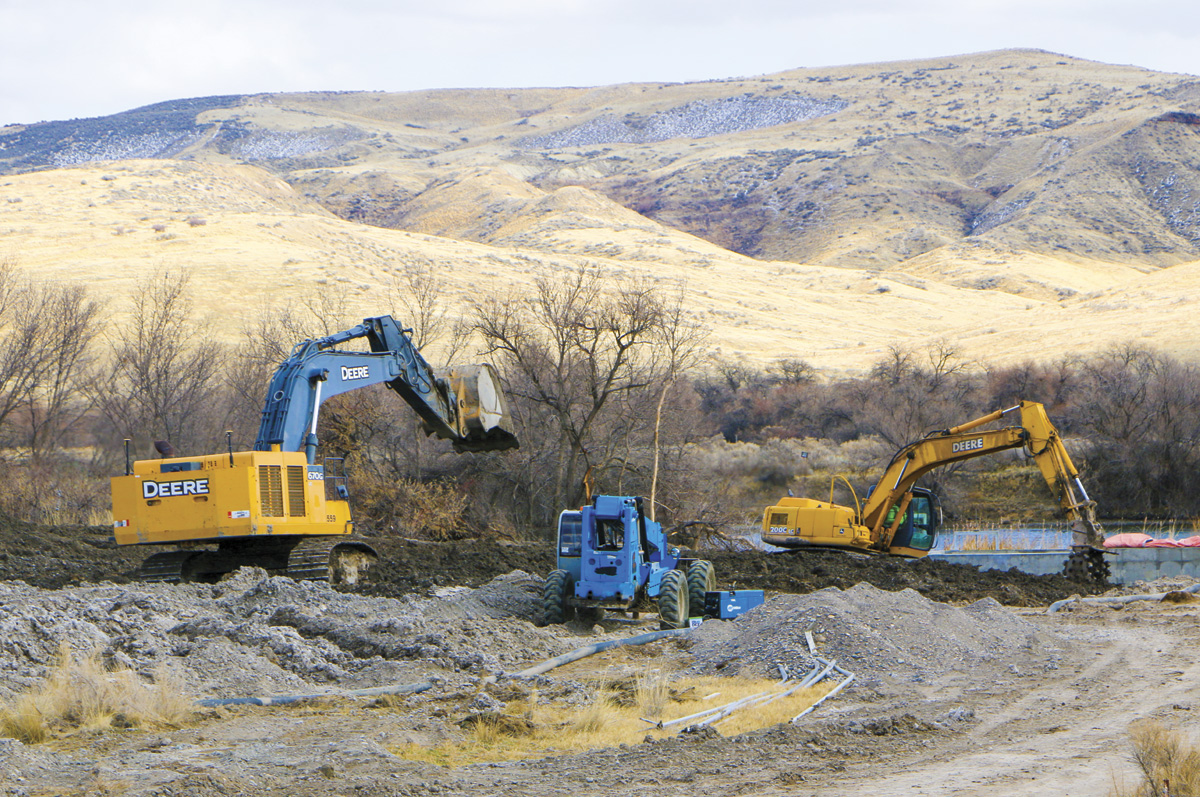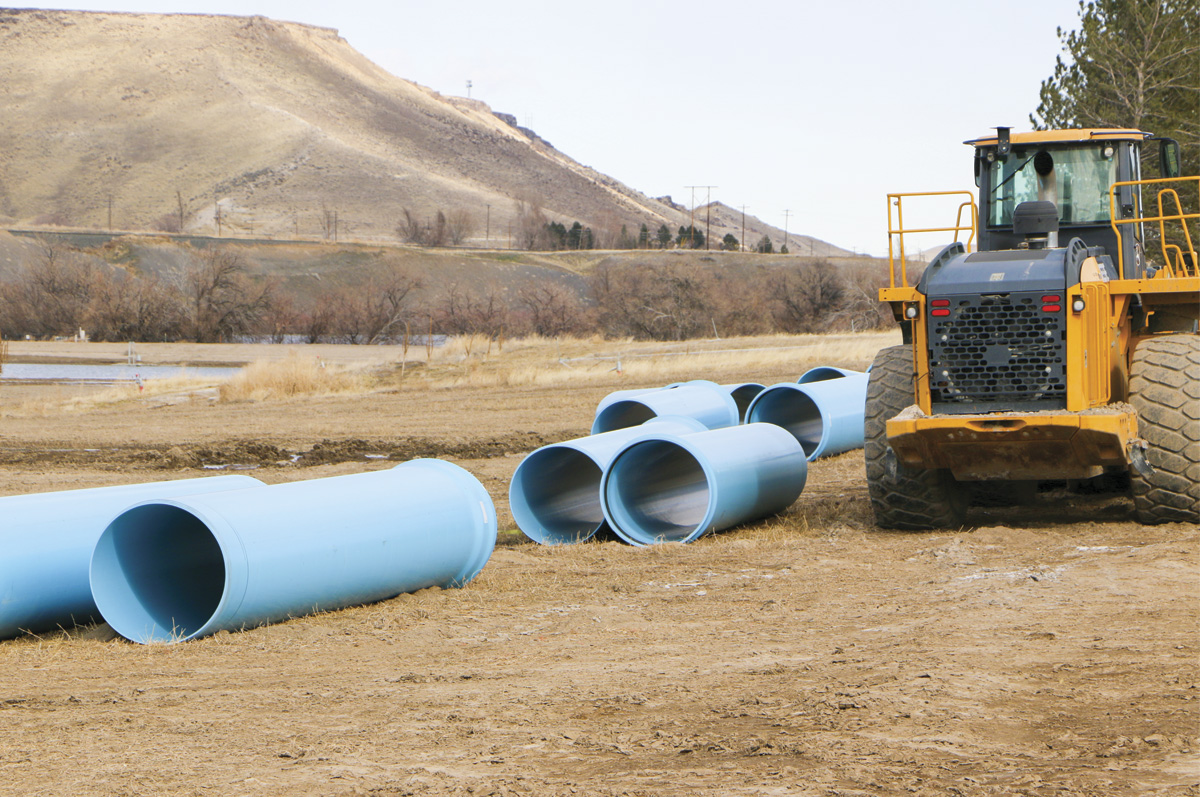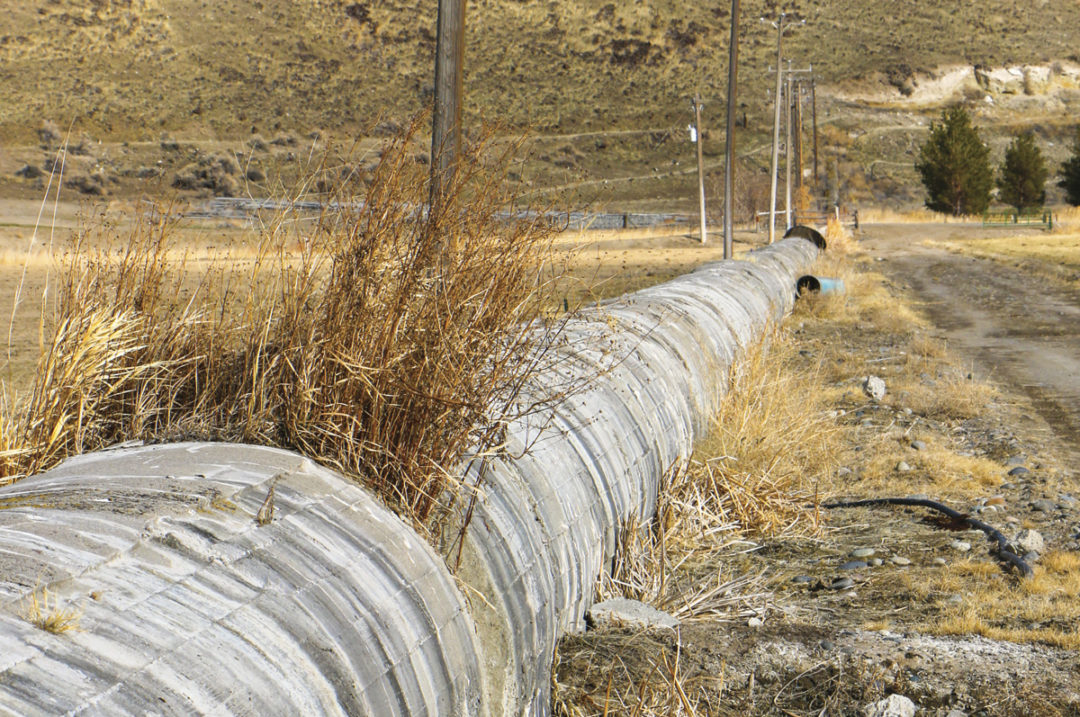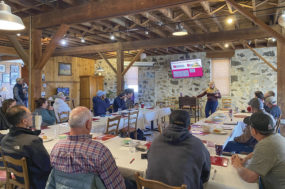With the significant years-long drought in the Pacific Northwest, Idaho water users have once again had to fine-tune water efficiency. With technology constantly changing, crop varieties expanding and weather patterns in constant flux, the irrigation practices useful just a few years ago continue to be upgraded and revamped. Water efficiency will always be at the heart of what Idaho farmers and ranchers do, on a community scale and on individual operations.
Community level
The King Hill Irrigation District is one of the many Idaho water-using entities looking to upgrade its water delivery system. Jeff Blanksma, chairman of the water board, says, “We’re in the process of installing a new pump station in Hammett to deliver water to properties in this area, all via closed pipe, which will completely do away with 6 or 7 miles of canal, servicing about 2,000 acres in Hammett Valley.”
The original system pumped water from the Snake River at Glenns Ferry and sent it throughout the valley.
With help and funding from several sources, including the NRCS, Elmore County Soil and Water Conservation District, Idaho Power and the Idaho Department of Water Resources, the district additionally obtained a 15-year loan for the remainder of the $6 million project. The line services 38 water users, but all users in the district are participating to pay off the loan with increased fees, hoping to see an energy savings in pumping costs to offset the fees.
“Most crops take around 3 acre-feet of water per acre, and most of our canal systems deliver 5 acre-feet per acre to get that to the farm ground,” Blanksma says. “So that’s 2 acre-feet per acre savings that wouldn’t be lost through the current canals but could stay in the river.” The canal system in Hammett is more than 100 years old, with portions of earthen construction, wooden structures and a leaky cement siphon.
 King Hill Irrigation District backfills the new pumping station at Hammett. Photo by Lynn Jaynes.
King Hill Irrigation District backfills the new pumping station at Hammett. Photo by Lynn Jaynes.
While the application process was started about four years ago, the irrigation district didn’t actually move dirt until November 2022. “The biggest problem they’ve had [with installation] is that when you get below the topsoil you hit black sand, so the ditches start caving in. They’ve had to overdig the ditches quite a bit,” Blanksma says.
The plan of Phase 1 is to have the pumping station and pipe installed and operational by spring 2023 water delivery. Phase 2 will require another $2.5 million, which would be to bury a pipe for water delivery up through Cold Springs Creek.
“It will make everyone’s land more valuable to have a reliable source of water,” Blanksma says. “And people along the siphon are anxious for the project completion because it will increase the amount of farmland they can farm.” The leaks from the current siphon create large, unfarmable bogs and marshes. “I’m sure there will be some unintended consequences, but in the long run, I think we’ll be better off. One of the concerns people have had is that the current groundwater level is at 50 feet or so, so that’s likely to drop if the canals aren’t leaking into it. But,” he says, “I’m not sure you want the canal water in your well water anyway.”
Individual farm level
On an individual farm level, Blanksma also looks for ways to increase water efficiency. Farming around 4,000 acres of alfalfa, potatoes, dry beans for seed and grains, the Blanksmas (Jeff and his brother Nick) farm from Hammett and the Bruneau Sand Dunes toward Mountain Home.
One of their water efficiency measures has been to always upgrade their pivot systems. “We’re a little late into the automation game,” Blanksma says. “In some of the larger river systems, there’s a valve to dump the water back into a canal – we don’t have that luxury. Everything is completely piped, so if a pivot were to go down, then you have the pump [without a VFD (variable frequency drive)] shut off at the river. Right now, a 2,300-volt system with VFD costs about 150,000 dollars just for parts – not labor for installation or anything else. We’re on a standard 480-volt system, and VFD for that range would be maybe 35,000 dollars. So we’re converting to pivots where we’ve got 480 power and are working that way.”
Part of the maintenance on a pivot requires replacing drop hoses, regulators and sprinkler heads about every six years, Blanksma says. “We have a rotation where we park the pivot for one year while it’s under potatoes. Following the potato crop, we go through and put new drops on, new pressure regulators and new sprinklers with new nozzles. I’m a big fan of the Komet sprinkler heads. Particularly with the wind we fight, I find those give us the most uniform water coverage. One of our farms is adjacent to the sand dunes park, which is there because of the wind, so we have significant wind issues.” They use a 6-foot drop on the pivots except on hillier terrain where the hoses have to be trimmed to clear the hills.
 About 6 miles of canal system will be replaced with 36-inch buried pipe. Photo by Lynn Jaynes.
About 6 miles of canal system will be replaced with 36-inch buried pipe. Photo by Lynn Jaynes.
Blanksma says, “We raise Russet Burbank potatoes and still believe solid-set [sprinklers] are the best way to raise that crop around here. So even if I had pivots everywhere, I’d park those pivots on a spud crop. The soil is sandy, and on really hot days like in [20]20-21, we’d give the potatoes a 20-minute flash water and use that moisture as evaporative cooling, and it helped a lot. A number of growers around here park their pivots on more sensitive crops and use solid set. Pivots aren’t the answer to everything, but the technology has come a long way. We are convinced, our neighbors are convinced, and our field man is convinced that in this particular area, year after year, we’re better operating our spud crop under solid set [sprinklers].”
Blanskmas also have adopted soil moisture monitors to increase water efficiency. Once buried in the field, the software monitors temperature, humidity and growth stages of the plant to help users figure out exactly how much water to apply. “In our perfect scenario, we’re not pumping any more out of the river than what our crops are using. But if a potato crop gets too dry, you can’t really recover from that. That’s part of the reason we raise them under solid-set [sprinklers]. In this area, it’s common to reach 105 to 110 degrees and not cool down under 80 degrees at night for several days at a time – and you can’t catch up with a pivot; it’s almost impossible. The hottest I’ve seen down by the sand dunes was in 2021 when it got to 116 to 117 degrees. But with a solid-set irrigation system you can catch up, and you can water where and when you need water, rather than a pivot system, which has to be running all the time whether you need it or not.”
With a moisture sensor averaging about one per 200 acres of farm ground, Blanksma places them more heavily in potato ground, which is a more water-sensitive crop, but uses them in all crops. “It measures moisture down to a 21-inch depth. At that level, if you see your moisture increasing and you’re below your root zone, then you know you’re overwatering and can back off. Because of the moisture sensors, we’ve cut back on the water in the spud crop pretty significantly,” he says.
It's stressful – farming is, just ask anyone. And with Idaho’s climate, elevation and rainfall level, it ratchets up the challenge even further. But it’s also an engaging challenge. Blanksma gives voice to the sentiments of many in agriculture when he says, “I love that every year’s different. Nothing’s the same. It keeps you on your toes. And there’s the satisfaction of looking out and pretty much every day you can see the work you did.”




.jpg?t=1687979285&width=640)



